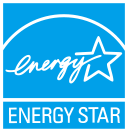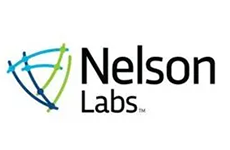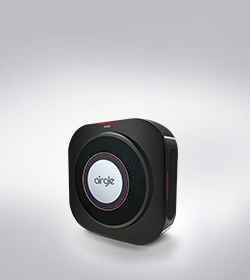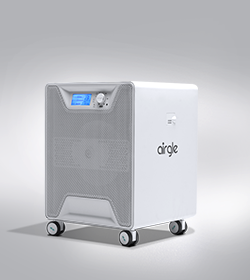Third Party Certifications
Our products have consistently earned certifications for quality and regulatory compliance from third parties and government programs.

AHAM (Association of Home Appliance Manufacturers)
Air cleaners certified through the AHAM Verifide® program have been tested by an independent laboratory to ensure the product will perform to the manufacturer’s product claims for the suggested room size to reduce tobacco smoke, dust and pollen. AHAM’s standard for measuring an air cleaner’s efficacy is called the Clean Air Delivery Rate (CADR). CADR indicates the volume of filtered air an air cleaner delivers, with separate scores for tobacco smoke, pollen and dust. The higher the CADR number for each pollutant, the faster the unit filters the air. The AHAM Verifide® mark can be found on the front of the product packaging of room air cleaners. In addition, AHAM Verifide® room air cleaners also have a label with more information on the side of the product packaging. This label will display the unit’s independently verified CADR values for tobacco smoke, dust and pollen. The label also shows the suggested room size for a particular model and will indicate if the unit has undergone energy testing.

ETL Listed Mark
The ETL Mark is proof of product compliance to North American safety standards. Authorities Having Jurisdiction (AHJs) and code officials across the US and Canada accept the ETL Listed Mark as proof of product compliance to published industry standards. Intertek is an OSHA (Occupational Safety & Health Administration) recognized NRTL (Nationally Recognized Testing Laboratory) and is accredited as a Testing Organization and Certification Body by the Standards Council of Canada.
Nationally Recognized Testing Laboratory (NRTL)
As an OSHA Recognized NRTL in the U.S., Intertek is able to test and certify products for its customers. OSHA (Occupational Safety and Health Administration) is a branch of the U.S. Department of Labor. They are primarily responsible for workplace safety. When OSHA created the NRTL Program in 1988, Intertek (known as “Electrical Testing Laboratories” or “ETL” at the time) was quick to gain recognition and began certifying products on behalf of its worldwide clients in 1989.
Intertek has 13 test laboratories across North America, Europe and Asia that are formally recognized as NRTL sites, plus an additional 31 laboratories that are qualified to test products for United States certification under the umbrella of our headquarter NRTL site in Arlington Heights, IL.

Energy Star Certification
Since its creation in 1992, the ENERGY STAR program has grown to designate high efficiency for products in more than 75 categories; for multifamily, manufactured, and single-family homes; for buildings in 21 property types, and for industrial plants in 31 diverse sectors. To earn the label, EPA requires third-party certifications in all categories.
Product-Specific Requirements are the foundation for ENERGY STAR product labeling, defining performance eligibility based on objective, repeatable test procedures. EPA follows a robust process for revising specifications to ensure that ENERGY STAR reflects advances in energy efficiency. Updates to specifications allow ENERGY STAR to deliver on its promise to designate products and services that protect the environment through superior energy efficiency without trade-offs in performance or functionality
Third-party certification. To earn the ENERGY STAR label, product performance data must be certified by EPA-recognized certification bodies prior to labeling. EPA requires testing in recognized laboratories with demonstrated capabilities. In 2018, EPA oversaw third-party certification of ENERGY STAR products by 23 independent certification bodies and more than 600 labs.
“Off-the-shelf” Verification Testing. EPA oversees verification testing to ensure products associated with the ENERGY STAR label continue to comply with program requirements.

California Air Resources Board
California’s Air Cleaner Regulation (AB 2276)
In 2008, CARB enacted an air cleaner regulation to limit the ozone emissions from indoor air cleaning devices. The regulation requires all indoor air cleaners sold in California to be certified by CARB. To be certified, all air cleaners must be tested for electrical safety. Electronic air cleaners must also be tested for ozone emissions and meet an ozone emission concentration limit of 0.050 parts per million (50 ppb).

Nelson Labs
Nelson Labs®, a Sotera Health company, is an industry-leading, global provider of laboratory testing and expert advisory services. Nelson Labs® performs over 800 rigorous microbiological and analytical laboratory tests across the medical device, pharmaceutical, protective barriers, and tissue industries. We know that every test matters and requires solutions to complex problems to improve patient outcomes and minimize client risk.

American Council for Accredited Certification
Established in 1992, the ACAC is the only certifying body in the IAQ field and has independent third-party accreditation from the Council of Engineering and Scientific Specialty Boards (CESB).

FDA-Listed
Air cleaners certified through the AHAM Verifide® program have been tested by an independent laboratory to ensure the product will perform to the manufacturer’s product claims for the suggested room size to reduce tobacco smoke, dust and pollen. AHAM’s standard for measuring an air cleaner’s efficacy is called the Clean Air Delivery Rate (CADR). CADR indicates the volume of filtered air an air cleaner delivers, with separate scores for tobacco smoke, pollen and dust. The higher the CADR number for each pollutant, the faster the unit filters the air. The AHAM Verifide® mark can be found on the front of the product packaging of room air cleaners. In addition, AHAM Verifide® room air cleaners also have a label with more information on the side of the product packaging. This label will display the unit’s independently verified CADR values for tobacco smoke, dust and pollen. The label also shows the suggested room size for a particular model and will indicate if the unit has undergone energy testing.

Biosafety Level 3 ( BSL-3) Laboratory
BSL-3 laboratories are used to study infectious agents or toxins that may be transmitted through the air and cause potentially lethal infections. Researchers perform all experiments in a biosafety cabinet. BSL-3 laboratories are designed to be easily decontaminated. As an additional safety measure, these laboratories must use controlled, or “directional,” air flow to ensure that air flows from non-laboratory areas (such as the hallway) into laboratory areas. Other engineered safety features include a requirement for entry through two self-closing, interlocked doors, sealed windows, floors and walls, and filtered ventilation systems. BSL-3 labs must also be equipped to decontaminate laboratory waste using an incinerator, an autoclave, and/or another method of decontamination, depending on the biological risk assessment.

PSE Mark
Electrical Appliance and Material Safety. The PSE Law and its regulations specify mandatory electrical safety and EMI requirements for electrical products sold in Japan.

KRCES
The Kitasato Environmental Science Center was established in April 1977 with the Environmental Health Research Center of the Kitasato University Faculty of Health as its parent body, and is currently engaged in a wide range of projects in the field of environmental science.

KC Mark Certification
The KC (Korea Certification) mark signifies compliance with Korea’s product safety requirements for electrical and electronic equipment and is issued by Korea-based certification bodies that have been approved by the Korea Standards Association. Manufacturers and distributors of electronic goods may apply a KC mark to their goods once they have completed the standard procedure.

Korea Air Cleaning Association
The Korea Air Cleaning Association was established in 1996 as the Korea Air Purification Research Association and since its establishment, it has contributed to the development of the air industry within the cleanroom and indoor environmental sector. KACA develops testing methods and product standards in the air purification industry in cooperation with experts and accredited testing institutes.

IEC / CB
The IEC System for Conformity Assessment Schemes for Electrotechnical Equipment and Components (IECEE) Certification Body (CB) Scheme is the world’s first international system for the mutual acceptance of product safety test reports and certificates for electrical and electronic equipment, devices, and components.

CE Mark
Established in 1985, the CE mark represents a manufacturer’s declaration that its products comply with the EU’s directives regarding products that are manufactured in or designed to be sold on the European market. When affixed to a product, the CE mark confirms that the product can be sold on the European market. Specifically, that the product:
* Fulfills the requirements of relevant European product directives.
* Meets all the requirements of the relevant recognized European harmonized performance and safety standards.
* Is fit for its purpose and will not endanger lives or property.
The presence of CE marking further indicates that appropriate technical documentation supporting the use of the mark is available and can be provided by the manufacturer, importer, or person responsible for placing the product on the EU market.

SGS
SGS Nationally Recognized Testing Laboratory (NRTL) labs provide electrical and electronic (E&E) testing and certification services for the US and Canadian markets. The SGS North America Listed Mark is widely accepted throughout the US and Canada by retailers and Authorities Having Jurisdiction (AHJs). SGS is officially recognized by the Occupational Safety and Health Administration (OSHA) as a Nationally Recognized Testing Laboratory (NRTL) in the US and is accredited by the Standards Council of Canada (SCC).

International Organization for Standardization
ISO 9001 is defined as the international standard that specifies requirements for a quality management system (QMS). ISO Standards make the world a cleaner, safer and more efficient place to live. The ISO 9001 Standards are international requirements that organizations use to demonstrate the ability to provide products and services that meet regulatory and statutory requirements so that we can continue to live in a world that is safe, clean and efficient.

DTI
Danish Technological Institute (DTI) is an independent and non-profit research and development institute. Since 1906 the Institute has worked to promote the application of technological advances, for the benefit of both the individual business and the continued development, growth and prosperity of society as a whole.

FEHD
Established on January 1st, 2000, the Food and Environmental Hygiene Department (FEHD) is a department of the Hong Kong Government, reporting to the Environment and Ecology Bureau. It is responsible for environmental hygiene services and facilities. The FEHD delivers its services through the Centre for Food Safety, Environmental Hygiene Branch, and Administration and Development Branch.

SASO - Certificate of Conformity
The SASO Certificate of Conformity (CoC), is a requirement for all regulated products exported to Saudi Arabia to ensure that they comply and conform to the relevant technical regulations covered by the Saudi Standards, Metrology and Quality Organization (SASO). It ensures that the product meets the Kingdom 2030 vision objectives in regards to developing the economy and trade methods that provide a quality lifestyle for Saudi citizens.

INTERNATIONAL ORGANIZATION FOR STANDARDIZATION
The independent assessment of Airgle’s environmental management system has verified that it aligns seamlessly with the globally recognized ISO 14001 standard, which sets rigorous benchmarks for environmental management systems. This certification affirms that Airgle consistently adheres to established environmental management best practices and standards, underscoring its commitment to environmental sustainability and responsible business practices.

 Support
Support Login
Login
 Sign Up
Sign Up
 Cart
Cart


 Login
Login Sign Up
Sign Up

